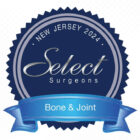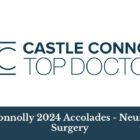Aneurysm coiling is an endovascular procedure for treating both ruptured and unruptured cerebral aneurysms. This procedure is less invasive than open surgery and when performed to treat an unruptured aneurysm, coiling has a shorter recovery time in the hospital and at home.
You can expect to be back to your normal routine about two weeks following your coiling procedure for an unruptured aneurysm.
What Happens During a Coiling Procedure?
Aneurysms occur when a section of an artery wall becomes weak and begins to balloon outward, filling with blood that passes through the parent artery. The resulting aneurysm can swell and rupture, causing damage to surrounding brain tissues and possibly death. Aneurysms can be treated by coiling even after a rupture. Yet when an aneurysm is diagnosed before a rupture happens, the procedure can prevent rupture and the associated consequences.
Aneurysm coiling is one of a number of innovative endovascular procedures that require a single small incision into the femoral artery of the groin. With the aid of contrast dyes and computer imaging, a catheter is threaded through this artery to the site of the aneurysm. Fine, flexible platinum wire is then fed through the catheter into the aneurysm, packing it with coils of wire so that blood passing through the parent artery is blocked from entering the aneurysm.
In some situations, a stent might be placed into the artery at the aneurysm site. The stent will provide extra support and keep blood flowing directly through an artery rather than into the aneurysm.
Once the coils and any other supportive devices are in place, the catheter is withdrawn, the incision is closed, and recovery can begin. An aneurysm coiling procedure typically takes between one and a half and three hours.
Recovery in the Hospital
Most aneurysm coiling procedures occur in a hospital, under general anesthesia. Right after your coiling procedure, you’ll be taken to a recovery room or intensive care unit for careful monitoring until you wake up from the anesthesia. Even when performed on an unruptured aneurysm, a coiling procedure can result in transient problems with speech, vision and memory. In some cases, the procedure itself can cause bleeding or rupture of the treated aneurysm.
Immediately after the coiling procedure, you may need to lie flat for a few hours to avoid causing a rise in blood pressure or bleeding at the incision site. If all goes well, you can continue your recovery in a standard hospital room.
During the rest of your hospital stay, staff will continue to monitor your progress and check for any emerging issues related to the procedure. Without complications, you can expect to return home within a day or two.
The Tri-State's leaders in Cerebrovascular treatments.
Recovery Continues At Home
Aneurysm coiling is far less invasive than surgery that involves opening the skull, so your recovery time is likely to be much shorter, with less risk of serious complications caused by the procedure. Full recovery typically takes around one week, with a gradual return to normal activities during that time.
In the first few days after your coiling procedure, your doctors will recommend you take it easy and avoid driving, strenuous exercise or lifting anything heavier than a milk carton. You may experience headaches, nausea or fatigue and you’ll be advised to monitor the incision site for signs of infection. You may be given medications for pain or other discomfort.
Follow Up Appointments
During the first month of your recovery from an aneurysm procedure, you can expect to see your doctors for a follow-up, where they will check the healing of your incision and evaluate your overall progress. In the weeks that follow, your doctors will continue to monitor your recovery and watch for any symptoms of neurological problems related to the procedure.
In about 85 percent of cases, an aneurysm coiling procedure resolves the aneurysm, with no need for further treatment. In some cases, though, the coils placed into the aneurysm can settle or become compacted, no longer filling the aneurysm sac. If this occurs, blood can start accumulating in the aneurysm again. Depending on the severity, a second procedure may be recommended.
To check the status of the coils, your doctors will typically schedule follow-up imaging tests such as angiography or MRI scans at intervals of 6 months, one year and, if all appears well, 18 months. Under some circumstances, an additional procedure to pack the aneurysm with more coils or to support the parent artery with a stent or other device might be necessary.
Aneurysm coiling surgery is not for everyone. Depending on factors such as age, overall health and the physical form of the aneurysm, your doctors may suggest another approach. Aneurysm coiling can reduce the potential complications of an aneurysm with less risk than invasive surgery.
Your doctors will work with you to create the right plan for treating your aneurysm and supporting your recovery. Knowing what to expect during the procedure and your unruptured aneurysm recovery time can make your recovery run more smoothly, helping you return to your daily routine as quickly and safely as possible.

About Dr. Dorothea Altschul
Dr. Dorothea Altschul is an accomplished neurointerventionalist in North Jersey and is the Clinical Director of Endovascular Services at Neurosurgeons of New Jersey, practicing out of their Ridgewood office located on East Ridgewood Avenue.






